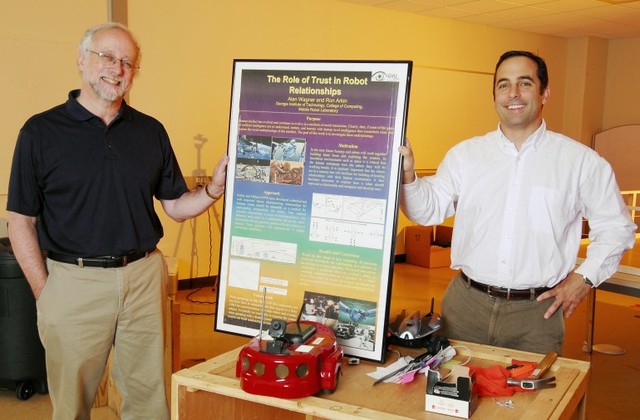What Could Possibly Go Wrong, Vol. 17
 |
Robots can perform an ever-increasing number of human-like actions,
but until recently, lying wasn’t one of them. Now, thanks to researchers
at the Georgia Institute of Technology, they can. More accurately, the
Deep South robots have been taught “deceptive behavior.” This might
sound like the recipe for a Philip K. Dick-esque disaster, but it could
have practical uses. Robots on the battlefield, for instance, could use
deception to elude captors. In a search and rescue scenario, a robot
might have to be deceptive to handle a panicking human. For now,
however, the robots are using their new skill to play a mean game of
hide-and-seek.Regents professor Ronald Arkin and research engineer Alan Wagner
utilized interdependence theory and game theory to create algorithms
that tested the value of deception in a given situation. In order for
deception to be deemed appropriate, the situation had to involve a
conflict between the deceiving robot and another robot, and the
deceiving robot had to benefit from the deception. It carried out its
dastardly deeds by providing false communications regarding its actions,
based on what it knew about the other robot.
Yeah, this’ll end well. Right now it’s all yelling “What? No, there’s no robot over here!” to enemy combatants and “What? No, your legs are totally both still attached!” to panicking accident victims, and next year it’ll be,” What? No, sir, I didn’t kill that school bus full of children. Besides, I accidentally left bring my buzzsaw arm attachment at home that day, anyways.” Thanks to Ham Mike for the tip. (Via Gamma Squad)
